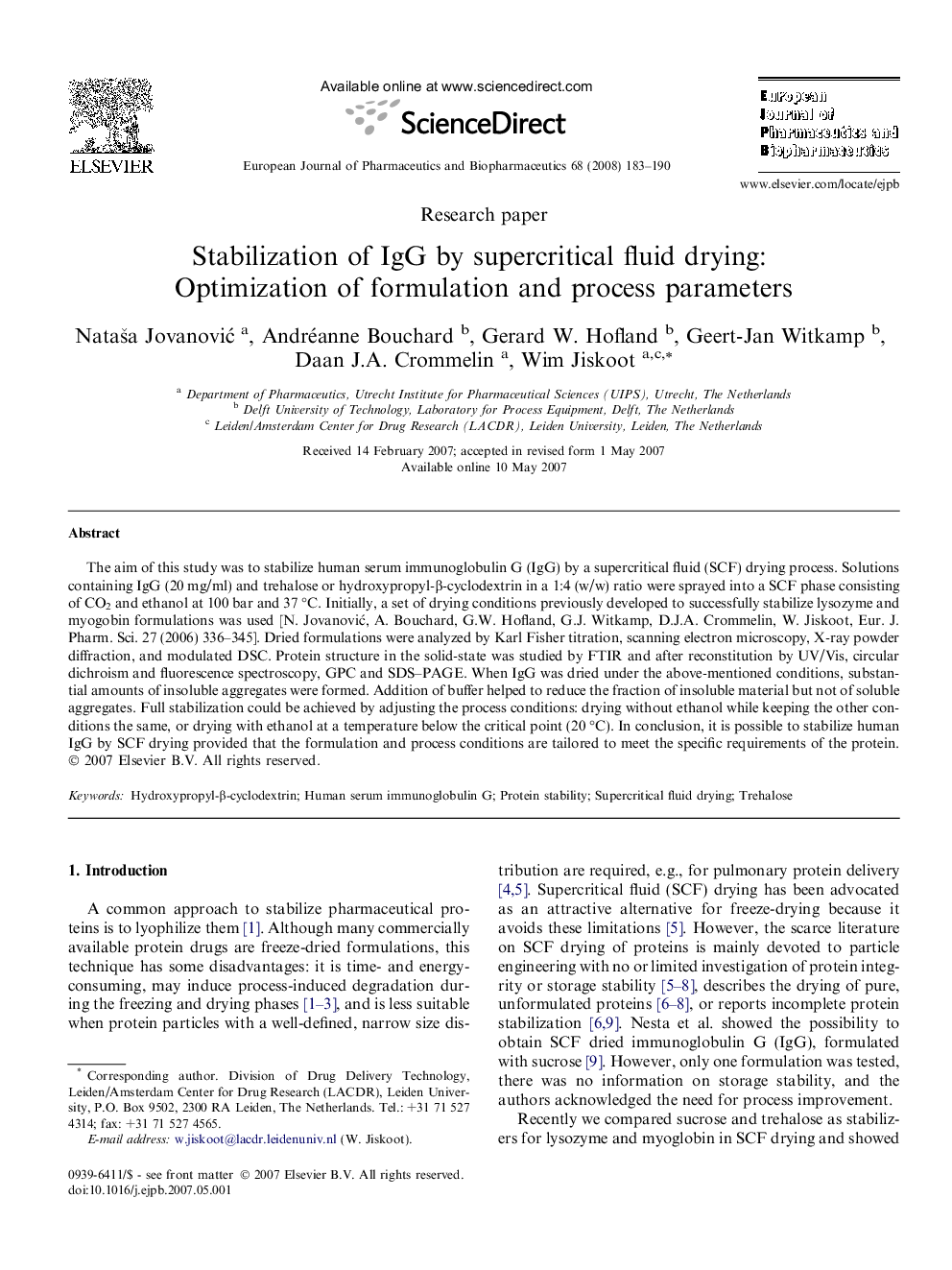| Article ID | Journal | Published Year | Pages | File Type |
|---|---|---|---|---|
| 2085658 | European Journal of Pharmaceutics and Biopharmaceutics | 2008 | 8 Pages |
The aim of this study was to stabilize human serum immunoglobulin G (IgG) by a supercritical fluid (SCF) drying process. Solutions containing IgG (20 mg/ml) and trehalose or hydroxypropyl-β-cyclodextrin in a 1:4 (w/w) ratio were sprayed into a SCF phase consisting of CO2 and ethanol at 100 bar and 37 °C. Initially, a set of drying conditions previously developed to successfully stabilize lysozyme and myogobin formulations was used [N. Jovanović, A. Bouchard, G.W. Hofland, G.J. Witkamp, D.J.A. Crommelin, W. Jiskoot, Eur. J. Pharm. Sci. 27 (2006) 336–345]. Dried formulations were analyzed by Karl Fisher titration, scanning electron microscopy, X-ray powder diffraction, and modulated DSC. Protein structure in the solid-state was studied by FTIR and after reconstitution by UV/Vis, circular dichroism and fluorescence spectroscopy, GPC and SDS–PAGE. When IgG was dried under the above-mentioned conditions, substantial amounts of insoluble aggregates were formed. Addition of buffer helped to reduce the fraction of insoluble material but not of soluble aggregates. Full stabilization could be achieved by adjusting the process conditions: drying without ethanol while keeping the other conditions the same, or drying with ethanol at a temperature below the critical point (20 °C). In conclusion, it is possible to stabilize human IgG by SCF drying provided that the formulation and process conditions are tailored to meet the specific requirements of the protein.
